 Open water swimmers the world over understand and appreciate how important escort boat pilots, kayakers, paddlers and support crew members are.
Open water swimmers the world over understand and appreciate how important escort boat pilots, kayakers, paddlers and support crew members are. Without a doubt, solo swims and races could not be safely done without these essential volunteers and experienced personnel.
We interviewed one very experienced kayaker, Richard Clifford, a practicing attorney from New York (shown above), about his thoughts and years of escorting swimmers around the world.
Richard Clifford has kayaked swimmers and relays around New York City, including many top swimmers in the 28.5-mile Manhattan Island Marathon Swim, the 17.5-mile Ederle Swim, several Swim Across America events, the Chicago Shoreline Swim, Catalina Channel solo swims, USA Swimming 25K national championships and across Loch Ness in Scotland.
 10Kswimmer: What open water swims and swimmers have you kayaked or paddled for?
10Kswimmer: What open water swims and swimmers have you kayaked or paddled for?Richard: I have paddled since 1993 in swims ranging from local charity swims and triathlons to ultra-distance competitions and races. I am a strong believer in the Swim Across America charity swims. The shorter swim events involve the creation of a moving-line of kayakers, not assigned to individual swimmers.
I have kayaked for many swimmers, including Marcia Cleveland of Winnetka, Illinois, Tammy van Wisse of Melbourne, Australia, Rendy Lynn Opdycke of Mission Viejo, California, John Kenny of Atlantic City, New Jersey, David Blanke of Austin, Texas, Liz Fry of Westport, Connecticut and John van Wisse of Melbourne, Australia. Kayaking for Marcia Cleveland involved swims three times through the night: Manhattan, Catalina and Chicago [in] Lake Michigan. Many swims have been competitions. Some of the swims have been in attempts at breaking or establishing record times.
 10Kswimmer: How do you prepare for such events?
10Kswimmer: How do you prepare for such events?John: Picking a swimmer. First, I pick swimmers I like as a person and, second, I look for a good swimmer. After all, we will be spending quite a few grueling hours together. So, I want to know that like them as a person, they are committed to giving their all, and will work together as a team with everyone involved. I also rely heavily on the suggestions and recommendations of other swimmers for whom I have kayaked.
Physical conditioning. I am blessed with good health and good conditioning. So, I do my best to be in good condition through a good life-style. My preparation includes the basics of being in good physical condition on the day of the event. I do that by kayaking and swimming. You will never catch me in a gym, not for anyone. On race day, I do not want to be an issue for my swimmer. I show up on time and ready to undertake and to complete the entire event regardless of the timing or conditions. If they swim, I kayak. When they stop swimming, I stop kayaking.
It is vital to the swimmer that the kayaker undertaking this effort is capable of completing all tasks throughout the day. For me, that always has included the course, feedings, and moral support.
Knowledge of the local waters. If I am in new territory (like Lake Michigan or Catalina), I look for a strong, local paddler. If you go to Catalina, then you make sure you ask Carol Sing and look for those great paddlers out of San Diego: Kevin Eserling, Rich Henry and friends. In Chicago, truly there is no one better than Tom Heineman. Never be too proud to seek help and knowledge.
Charts. I prepare for all events by reviewing charts for the swim course. A chart is a map on the water. A current chart will tell the crew the channels, water depths, and any marine information. Water depths will help the crew understand and appreciate the flow of water on the tide cycle. This is particularly significant with a river swim. It is not significant for a lake swim as there are no tides. The tide either will be an ebb or a flood. And, water moves through the deepest channels. having a notion where that is may mean the difference between finishing first or watching another someone swim away from you.
Discussions with the swimmer. It is vital to review and thoroughly with the swimmer and crew the event, the course, any limitations, restrictions or conditions, strategy and tactics, and good sportsmanship includes respecting the field of competition and the crew. Going blind into an endurance, distance swim of 25+ miles is just what it sounds like. It is not enough to just show up.
And, one last time I check all of my gear to collect what I need and remove the junk. One must be prepared for the weather and events we encounter, not the ones we hope to have. I will pack a rain jacket on a sunny, smoking hot day beforehand, or apply sun screen (in the dark), or take a Capilene shirt for a night paddle.
Finally, if one is a swimmer or kayaker preparing for a swim in unfamiliar territory or range then look for the experienced hand and ask for guidance. Several people are mentioned through-out this account who are great assets to the swimming community. Do not be so proud to think that asking for information and guidance is a weakness.
 10Kswimmer: What do you take on your kayak for the open water swims, in terms of food and equipment?
10Kswimmer: What do you take on your kayak for the open water swims, in terms of food and equipment?Richard: I follow this advice, "Keep it simple; as simple as possible, but no simpler." by Albert Einstein.
First, my gear is focused on my safety. I have two carbon fiber paddles. Light and strong. Also, a good motivator for a swimmer who needs a poke on the very rare occasion. Always wear a PFD, personal flotation device (life-jacket). Always make certain your kayaker is wearing one. Hat, sun glasses, bailer scoop. VHF marine radio. This allows the kayaker to communicate with or to monitor radio traffic on the crew power boat(s) or the race/event officials. Water-proof chart (on the kayak deck). GPS unit. This varies in importance, but is very helpful for long, night swims like Chicago and Catalina. It is not so important as equipment, other than for speed and distance measurements, where the swim is being escorted by a larger vessel.
Second, I carry the feeding supplies and the equipment that the swimmer gives me. For example, on Manhattan swims, I will feed the swimmer directly from the kayak every 20 minutes. I will get re-supplied from the crew aboard the power boat, but I carry for several enough for several feedings. I set up for the feedings and inform them by hand signals in advance of the feeding(s). The swimmer only need swim into the feeding cup, roll over, feed, toss the cup toward me, roll back and continue swimming. This takes merely seconds. At some feedings the swimmer will indicate: "Tylenol at next feeding" or a particular food they want such as "GU." And, I will remind them to pee as needed.
Third, personally, I do not each much during the swims. I drink a cut-down mix of clear Powerade or Gatorade. I will eat bananas or some "power" bars. Eat well beforehand and have the stored energy works better for me.
 10Kswimmer: What are the things that you do during a marathon swim?
10Kswimmer: What are the things that you do during a marathon swim?Richard: I maintain the best course for the athlete. I look at the athlete's position in terms of other competitors, monitor the well-being of the athlete and inform the support boat if the athlete seems to be in distress.
I spend a great deal of effort and time concerned with my boat position. I will be in constant communication with the support crew where there are important maritime issues such as oncoming boat traffic, debris int he water, instructions coming in from race officials, etc.. My kayak position is important: (a) lining up on my course, and (b) staying alongside the swimmer, not ahead, nor behind.
Sometimes a kayaker has the advantage of having previously worked with, and spoken to, the swimmer. Sometimes, not so much. Ideally, the kayaker is supposed to be on course. If the swimmer starts crowding the kayak, then they will recall from our pre-event discussions that means they are coming off of a line. If they noticed a gap widening between them and the kayak then that will indicate to the swimmer that they are veering again.
I also inform the swimmer by hand signals (a) to move closer or away and out from the kayak, and (b) in advance when their feedings will occur. Also, I will raise a bottle (e.g., Tylenol) or food object (e.g. GU or banana) well-in-advance of a feeding to learn if they want/need any. I review this with new swimmers before an event. The ones with whom I've paddled and/or prepared let me know in their own manner if it is a 'yes' or 'no' for anything. Some give a shout-out, some [give] a wave while swimming.
I look at and watch the swimmer. I do not count strokes. Easy enough, but I leave that to the crew aboard the boat. They will write it on a board in large letters for the swimmer to see. And, they should be entering this info into the swimmer's log for the swimmer, crew and race officials to review afterward. It is too much of a distraction for me to be doing my role in the kayak and looking at a watch. And, swimmers cannot hear a thing during many of these swims. They do not need someone in a kayak shouting at them, particularly not a stroke count. I do watch the swimmer carefully to discern if they have a stroke issue or early signs for the onset of hypothermia.
10Kswimmer: How do you keep your athlete motivated and safe during marathon swims?
Richard: Motivation and safety are hugely distinct issues.
Beforehand, I like to have an extensive discussion with the athlete to see what their goals of the event are. I also like to find out what and where their strengths and weaknesses are, where and when I can push them, and what are their breaking points. A lot of the time, I just smile and nod at the athlete if they are
fine. To keep them safe, I'm always looking a few meters ahead of our position in case there is anything interesting in the water to avoid.
I suppose it is always fitting to hit the motivational point with my swimmer(s) before an event, quoting Leonidas, the Spartan King who died fighting against the Persians in the Battle of Thermopylae in 480 B.C. "Remember this day men, for it will be yours for all time."
Morty Berger, the Manhattan Island Marathon Swim race director, told me some time back that a good long-distance swimmer is a very patient person. I have come to understand and to appreciate this over the years. They train very hard, often alone or in the dark. There is an inner drive and a goal they must have. By event day, they must have their own motivation and drive.
Family and friends often call the crew aboard the power boat during an event. All night long. So, the boat crew passes through messages of support and well-wishing to me in the kayak. I pass it along to the swimmer(s) at the feedings. Don't underestimate the importance of hearing from those folks, including sometimes a message that they are heading off to bed.
There are times during an event where the swimmer starts slipping out of gear. They begin to lose their focus or get dis-spirited with the way an event is going. I am reluctant to yell at a swimmer. The swimmer needs a kayaker there to calm them, to assure them and to do their own job. Not to be out there losing control. Sometimes one needs to be emphatic. I can be emphatic.
It is very important to discuss the swim in advance. And, I will discuss the entire race course strategy in advance. All 28.5 miles. I want the swimmer to call it up from rote memory and put it into play in the water. One device for motivation is to set up against a 2-, 4- or 6-person relay and use each new swimmer to challenge yourself. A 6-person relay is not for the faint of heart. Also, in the Hudson River the line of site is much easier than the preceding rivers. It is easy to see the swimmers who are ahead. I have my swimmer set limited goals for limited and quicker successes from Spyten Dyvil to the finish. There is plenty of swimming left to do in the Hudson River. Pick off one swimmer at a time. Re-set, go after the next swimmer. Repeat to finish.
I also stress one point to the swimmer based on experience. "Swim the entire race. Don't worry about position." The first swimmer to finish is the winner. It does not go to the favorite, nor to the person ahead all day, not even to the best swimmer. Manhattan is a tactical race. Swimmers frequently will pick off 5-10 swimmers and relays in the Hudson, or the opposite.
One year, Rendy Opdycke was suffering from having planned poorly on her feeding source. By the Broadway Bridge in the Harlem River she had 13 swimmers and relays ahead of her before she even got to the Hudson River. She stopped up near the rock with the Columbia "C" and she lost everything inside her. It was not pretty. So, I asked, are you finished? Should I call over the escort boat? Or, do you still have your head in this swim? She said "yes" she was good to continue. So, for the remainder of her swim, I fed her clear Powerade and GU. She finished second as the first woman. She passed all those others in the Hudson. The next trip we took, her suit strap broke or was scraping her shoulders, after merely 400 yards. So, she rolled it down and inside and swam the day topless. She did well, and was first woman to finish.
10Kswimmer: Have you ever had any close calls?
Richard: There are two things that come to mind when we discuss close calls: a close finish or a hazard.
Close finishes. One body length, 3 seconds qualifies as close especially after 28.5 miles. This one takes the cake. In 2000, John van Wisse was be-deviled by Bronwen Whitehead, another Aussie swimmer. She out-swam him all day. At the end it was just the two of them in a match swim race with 400 yards to go. At the last 100 yards, they took different courses to the finish line. John swam around Bronwen and won by merely a body length. Great swim, great swimmers, but the victory goes to the first to touch. 3 seconds, one body length.
Safety hazards. I would say that the early detection of hypothermia onset is the single greatest thing any kayaker may do for a swimmer. Danger avoided. In the 2008 Ederle swim the event was taking place late in the season. The water had cooled down significantly. I watched my swimmer, David Blanke, carefully through the morning. He was not completely processing his feedings. His metabolism was not kicking out the calories he needed to swim and to stay warm. His stroke, always perfect, was going off. Crossing waves were bothering him for the first time I had seen. And, he started asking me questions. Never good. I realized that his mind was slipping out of the swim.
So, in second place and after 12 miles of a 19-mile swim, I made a decision to have him pulled. I hated doing that. But, the alternative was worse. I have a 200 lb. swimmer in the water covered in Vaseline or grease and out-of-gas. On the boat, I have his wife and another woman as crew and a boat captain who would not win any Heart Association awards for fitness. Within minutes of being pulled and along the entire way back to Manhattan he shivered and was shaking uncontrollably as they warmed him.
Otherwise, I am a total believer in preparation and planning. I do NOT like close calls. I do NOT like having discussions with swimmers during an event. And the notion that any swim should be an adventure is total foolishness.
10Kswimmer: In a close race, what can you do specifically for your athlete?
Richard: Yell! Sure, I yell, but doing my job right down to the finish is very important for the swimmer. They need clarity. They need constancy. "Constancy is the foundation of virtues," said Francis Bacon They do not need Tentative Tim in the kayak. Make a well-informed decision. No pausing, no hesitation. Be prepared in advance; adapt to the situation on the water. Get the best course. Lead them to the finish. Get everyone home safely. One always may return the following year to compete.
I help them maintain their rhythm and their mental toughness. I keep them on the best course line which may not always be the logical straight one.
One year, John van Wisse won by 3 seconds, merely one body length. Another year, I was screaming at Rendy Opdycke (she really couldn't hear a thing) and wildly pointing to go left near the finish at South Cove in Battery Park. She looked up to see the Battery Park Wall staring at her, paused and stared at me with a look like I was crazy. But, only for a fraction of a second. She turned and swam, apparently for her thinking, right into the seawall. The current was ebbing at a roaring 3-4 knots. Just when she thought she would hit the wall, she popped right into the finish line. Any delay and she would have been swept beyond the finish and had to swim back in the South Cove bay area.
10Kswimmer: Why do you enjoy kayaking?
Richard: I love being around athletes who are totally dedicated to their event. I feel inspired being a part of their efforts.
I also enjoy sea-kayaking in the winter in these parts. It gives me an opportunity to see the many migratory sea-birds and mammals that we miss on land and in our busy work lives.
Lastly, sea-kayaking came into my life in the early 1990's. It changed the course of my life and in a way saved me from a particularly dark and angry time.
10Kswimmer: Who, in your opinion, would be someone who you would like to kayak for, but have not yet had the opportunity?
Richard: I always regret having missed the era of Shelley Taylor-Smith. We overlapped one year. She was great swimmer and great for the Manhattan swims. And, she has been one of the strongest proponents for the 10K open water swimming event in the Olympics. I would have loved to kayak for her.
Lynne Smith of Austin, Texas is the only one person I have asked to come to New York to swim Manhattan and to please include me as her kayaker: request pending! Look at recent her results at the US Masters Swimming Championships in Clovis, California. For the moment, she is holding out as a sprinter. She is truly a distance swimmer, who had her moment sprinting. I want to kayak for her because, before any other reason, I like her as a person. That comes before anyone's swimming abilities.
No disrespect to John van Wisse, but I prefer to kayak for female swimmers. My theory from the years - they integrate the notion of "team" better than males. Guys get way too testosterone driven for many of these events. Female swimmers consider tasking, roles, responsibilities and goals much better. Muscling your way through a 28-mile swim or one in the dark is a formula for failure.
And, I am quite certain that Marcia Cleveland, Chair of the USMS Open Water Swim Committee, and good friend, will have me kayaking for more swims with her and other friends in the future.
10Kswimmer: Do you have any advice for a newcomer who would like to get into kayaking for marathon swimmers?
Richard: Work with an athlete in a few training sessions before getting into a race. Or, in a race, take an athlete who is less competitive and willing to work with a novice. Also, communicate with the athlete before, during and after so you both know what works and what needs to be improved upon.
Take your time before you volunteer. Climb the ladder of involvement. Ultimately appreciate just how important a role you have on the water. The swimmer has trained hard and long, and looked forward to the event, believing that they will be able to finish it. It is your responsibility to be pro-active on the water. A kayaker should not be passive. You are there as part of their crew in a race or among many kayakers, but you are there for the safety of your swimmer and all swimmers.
Make sure that you go to all pre-event meetings to inform kayakers and other crew of the event rules, timing, conditions, cautions or limitations. Do not skip these meetings no matter how experienced you believe yourself to be. An uniformed kayaker is not going to be able to help the swimmer if they screw up the rules set down by the U.S. Coast Guard (during the Ederle swims) and/or New York City Marine Police units (during the Manhattan swims). These meetings are not for the self-aggrandizement of race officials. They are an important part of every swim.
Make sure you have any and all necessary gear appropriate for the swim. A kayaker need not carry a light for a swim taking place at 8 am. Everyone will be mocking you as gadget boy. Or, maybe they will let you sleep through the finish.
Don't step out of your role as kayaker to do silly things. One swim, in the dark, we had a "kayaker" who sat back in his boat to tie and untie knots. He did this as he drifted back away from the swimmers and escort boat on the Pacific Ocean in the middle of a moonless, cloud-covered night. It was a huge distraction for everyone, swimmers and crew. So, don't become the safety issue.
Make sure that when you undertake the event that you are prepared to finish the entire event. If you have limitations of any kind then you must inform the swimmer, race officials and others in advance. If you must drive your kids to a dance or a soccer game then let people know that. If one is diabetic, then let people know that. Many years back early on in a Manhattan Island swim race, we all watched in horror as the kayaker pulled up merely 90 minutes into the event to take a break to eat and pee. Hello, what is the swimmer supposed to do while you on a break? None of this means you would not be able to participate. It simple allows race officials to ask you to the proper role.
Just like working in a restaurant. Go to an event when you are ready and trail an experienced kayaker or swimmer. Pay attention. Look at the gear. Look at what they do, don't do, what they say how they communicate. And, ask a million questions afterward. But, be invisible during the event for your learning curve.
10Kswimmer: Do you have any advice for race directors and other safety personnel from a kayaker's perspective?
Richard: "Nothing on earth is so weak and yielding as water, but for breaking down the firm and strong it has no equal," said Lao-Tzu, Tao Te Ching
Swims are not static events. We cannot pull out last year's rules and organizational chart and simply replace the dates and times. Pre-race meetings are important.
Even experienced kayakers must be engaged in the pre-event process. Do not rely on a kayaker's resume that he or she will still be an asset.
Less experienced kayakers should be paired to observe, trail and be-quiet during the event. Afterwards they better have 8 hours worth of questions. This is the best way to prepare for future swims. I did it when I started by peppering Shelley Taylor-Smith with questions about her swims and crews and course.
There should be a continuing effort to strengthen the fabric of the open water swimming community, for example the USA Swimming On-Line Testing Sub-committee. This is needed to occur on multiple levels. Race directors should be talking about their events, not as competition with their own, but as an asset for the pool of knowledge.
Lastly, do not underestimate the risks and dangers involved every time a swimmer slips into the water with the entire train of officials and crew around them. It is vital for everyone's safety to listen to yes men. "The road to Hell is paved with good intentions" (Karl Marx), or with bad assumptions (Richard Clifford). Race directors should not assume that every swim will be completed without injury or death. They should challenge themselves constantly with what-if's so that if something happens the outcome may seem miraculous, but the well-informed will say that was the result of preparation and training.
When everyone is tucked away after the award ceremony, a safe event is a great event.
Copyright © 2009 by World Open Water Swimming Association



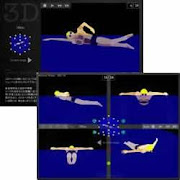




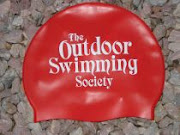

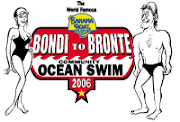


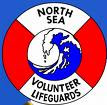
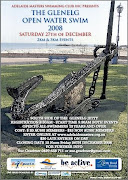





2 comments:
A wonderful, wonderful article. Thanks so much, Richard!
We agree that Richard is a remarkably thoughtful and thoroughly prepared kayaker who would be an asset to any marathon swimmer.
Post a Comment